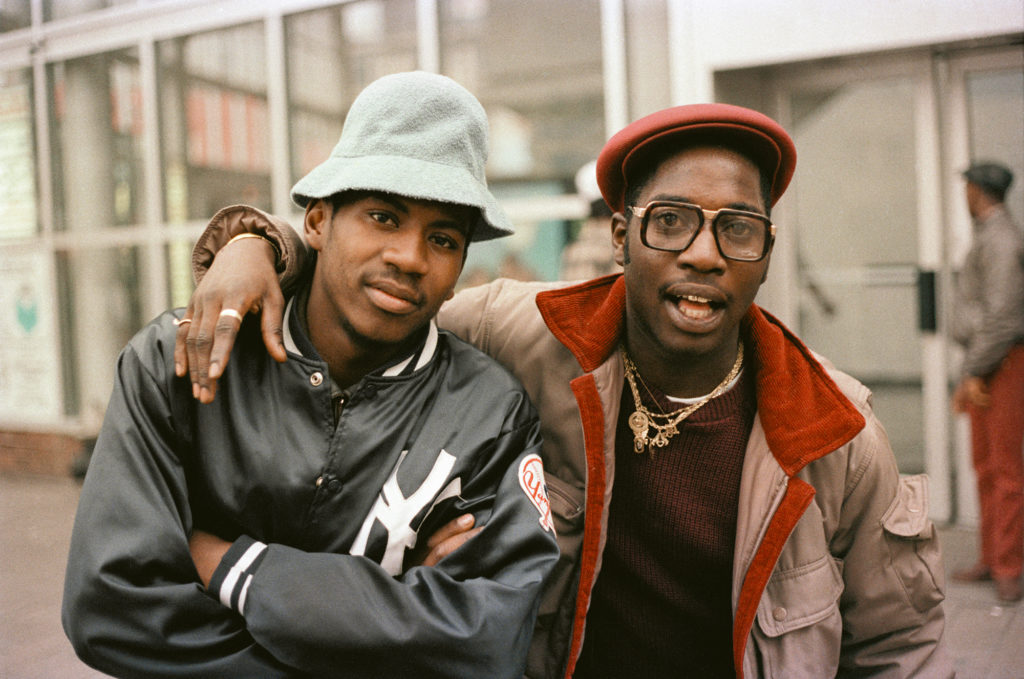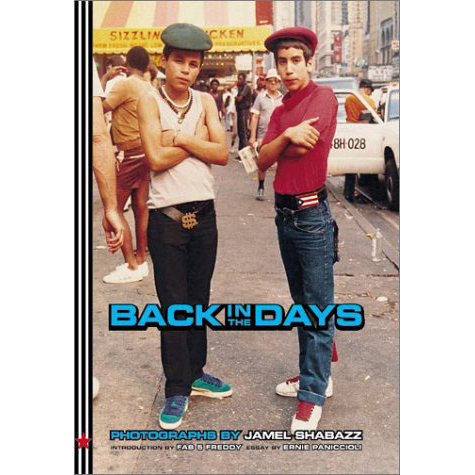You are using an out of date browser. It may not display this or other websites correctly.
You should upgrade or use an alternative browser.
You should upgrade or use an alternative browser.
A comprehensive guide to the origin/roots of HipHop's elements (all verified facts w/ OG interviews)
- Thread starter IllmaticDelta
- Start date
More options
Who Replied?IllmaticDelta
Veteran
I’m not sure if you already covered it in the op
but a section on just Sound SYSTEMs would be dope
@IllmaticDelta
here goes one for Infinity Machine
K.O.N.Y
Superstar
here goes one for Infinity Machine
Will watch later
This is why this thread is necessary
dope name as well

K.O.N.Y
Superstar
An important leg that needs to be addressed that I've never seen you touch on yet @IllmaticDelta
Is the FASHION
The early on transition into that hiphop/retro fashion that persists till this day.
When the fashion became distinctively "hip hop" in nature


Is the FASHION
The early on transition into that hiphop/retro fashion that persists till this day.
When the fashion became distinctively "hip hop" in nature


K.O.N.Y
Superstar
I second this @IllmaticDeltaThis is a beautiful thread op, please back up and save this information
Cuz nikkas is already moving kinda funny

K.O.N.Y
Superstar
Grand wizard theodore the first to ever scratch
Is this the main difference between hip hop djing and funk disco djing

@IllmaticDelta
Is this the main difference between hip hop djing and funk disco djing

@IllmaticDelta
IllmaticDelta
Veteran
Grand wizard theodore the first to ever scratch
Is this the main difference between hip hop djing and funk disco djing
@IllmaticDelta
Yes. Break beat djing with 2 copies of the same record for manipulation
and the prototype to the quick mix already existed in Disco djing

.
.
.
HipHop djing didn't really become its own thing until hiphop djs made the turntables into a percussive instrument via Scratching. This actually first started with Kool D's brother, Tyrone The Mixologist!
Grandmixer DXT talking about it

Dj Jimmie Jazz (Zulu Nation) talks about it here
.
.
.
Theordore is where most people heard/saw it, as he took it to new heights

He took out Flash with it
Flash on Theordore:

.
.
.
and Grandmixter DXT took it to even greater heights and fathered the mainstream "Turntabalist" sub-culture

Last edited:
K.O.N.Y
Superstar
@Barnett114 why is a hip hop origins thread......................................................................................................................................................................................................................................................................................................................................................................................................................................................On a hip hop forum not stickied
IllmaticDelta
Veteran
An important leg that needs to be addressed that I've never seen you touch on yet @IllmaticDelta
Is the FASHION
The early on transition into that hiphop/retro fashion that persists till this day.
When the fashion became distinctively "hip hop" in nature

HipHop or street casual style of the 1970s isn't well documented since hiphop wasn't mainstream at that time but you can find descriptions here and there of that the style
Cholly Rock: he makes it clear they only wore fitted pants, no baggy stuff in the 1970s
.
.
.
Coke La Roc:
SIR NORIN RAD:"I heard you mentioning that store A.J. Lester in that interview you did with DJ Kay Slay...what was it like to shop there?"
COKE LA ROCK:"Okay, shopping at AJ Lester's meant that you was on another status in the streets...of getting money. Cause the cheapest shirt in there was 100 $.. your underwear in there was 50$! Shopping at A. J. Lester's...it was a thing with A.J. Lester...you go there and it's expensive on the first floor but if you are spending over 2000 $ or better you go downstairs and meet Mr. Lester. This where you see real fly clothes and Mr. Lester he would tell you, "If you see somebody with that suit on or that shirt that you bought from me I'll give you your money back." That's what A.J. Lester was about. When you wear a A.J. Lester shirt at a party and there are 1000 people in there you bet that you will not see another person with it on. You never wanna look like the next cat. That's where that style came from! And I mean I changed my clothes every week. You couldn't wear the same thing every week! (laughs) You feel me!?? I had 20 pairs of Pumas that was all flavors! I had seven pairs of lizards! All flavors!"
SIR NORIN RAD:"What about your coat game?"
COKE LA ROCK:"Listen....when cats was wearing snorkel coats....just to show you how far it went...even when they wore regular Cortefiels I had a Cortefiel blazer...I had the soft Cortefiel, most cats just had hard Cortefiels....I had the Cortefiel with my name inside my lining. Then when cats was wearing shearlings I had a pony coat. Cats didn't know what a pony coat is, you would think there was a gorilla on my back!"
SIR NORIN RAD:"Was it also possible to get custom made gear at A.J. Lester's?"
COKE LA ROCK:"Nah, I mean A.J. Lester's really wasn't the custom made spot. You had a spot called Mr. Tony's and Mr. Orry's. Them was two taylor made spots where you gotta pay 250, 300 $ to get your pants made. That's where you get your pepper silk pants made any way you want it. I used to get pants made with one pocket. I went ballistics with it. A. J. Lester's was the regular spot with all the new stuff from Italy and wherever they was getting their clothes from. But if you wanted it taylor made you went to a spot called Mr. Tony's or Mr. Orry's."
SIR NORIN RAD:"I have heard Kool Herc and others (shout outs to Zulu King Cholly Rock) mentioning a brand called Blye that was popular back then. What was that about?"
COKE LA ROCK:"To me they were Italian Knit shirts. They gave diffent names to them back then like Blyes, Alpacas..."
Castles In The Sky
coke la rock in the 70s

disco king mario

.
.
but ultimately, true HipHop fashion took off in the 1980s and was a product of bboy style and crack era kingpins/streets





.
.
Last edited:
Wear My Dawg's Hat
Superstar
An important leg that needs to be addressed that I've never seen you touch on yet @IllmaticDelta
Is the FASHION
The early on transition into that hiphop/retro fashion that persists till this day.
When the fashion became distinctively "hip hop" in nature

Jamel Shabazz did a great job capturing on film, b boy/b girl fashions as they developed.
At the time, you wanted to earn cash so you could head to 125th Street, Fordham Road, Delancey Street, Jamaica Ave, and the Albee Square Mall to cop the new fresh.

The subtle shift from dance music to something that sounded and looked much grittier might have been imperceptible if Shabazz had not been there to record it on film. “Can I capture your legacy?” Shabazz’s simple prompt would offer later viewers of his work a window into the burgeoning hip-hop culture of the early ’80s. To live on film was a promise of immortality that the tumultuous street life could not guarantee. One of his most iconic photographs of that era, Rude Boy (1982), is symbolic of this early hip-hop style ethos. “Kerral was a hustler,” Shabazz says of the photograph’s subject. “He was a really smooth, debonair guy who I thought had a lot of potential.” Decked out in his pinstripe suit and tons of gold jewelry, Kerral slyly posed for Shabazz’s camera—bent over slightly, hand on chin. Kerral was murdered only a couple of years after that photograph was taken. But his legacy lives on in the National Museum of African American History and Culture and on social media. That image also represents Shabazz’s pioneering approach to street-style photography. It was not about stealthily capturing a candid portrait of an unknowing subject; it was about collaborating with the person. Shabazz wanted to photograph Black and Latinx youth in a way that allowed them to shape how they wanted to be seen and understood by posterity.
Why Jamel Shabazz Is New York’s Most Vital Street Photographer
Wear My Dawg's Hat
Superstar
A must-have for any collection

K.O.N.Y
Superstar
Good stuff guys
So i've always thought..... In an alternate universe hip hop could have been created in Philadelphia
As it had many of the same ingredients necessary for hip hop
The great migration going to the urban north. The disco scene
Can you go in depth on what Philly was doing around the 70s. Did they have funk-disco DJs?
@IllmaticDelta
So i've always thought..... In an alternate universe hip hop could have been created in Philadelphia
As it had many of the same ingredients necessary for hip hop
The great migration going to the urban north. The disco scene
Can you go in depth on what Philly was doing around the 70s. Did they have funk-disco DJs?
@IllmaticDelta
IllmaticDelta
Veteran
Good stuff guys
So i've always thought..... In an alternate universe hip hop could have been created in Philadelphia
As it had many of the same ingredients necessary for hip hop
The great migration going to the urban north. The disco scene
Can you go in depth on what Philly was doing around the 70s. Did they have funk-disco DJs?
@IllmaticDelta
The codified version of Disco muisc came from Philly-Soul but NYC had the mixture of Black music + Gay clubs + Italian mafia that produced Disco-subculture
One journalist in a classic gay entertainment magainze, After Dark, provided his readers with an informal documentation of how disco grew to be a part of the gay community. This kind of historical retelling was extremely popular in the queer community of the time and even to this day due to the fact that popular historical narratives do not provide significant focus on the experiences of margianlized people. As Druckman describes, disco as a musical genre became popular among the queer and black communities around the mid-1960s. The idea of a disco club originated out of the New York clubs that were dedicated to specific dance moves, like the Watutsi and the Twist. The dance-focused clubs became very popular among the queer community because, for short periods of time, people of the same sex were allowed to openly dance with each other. While this had been the case throughout American history, this time saw queer people participating openly in nightlife in a way that had not been seen in decades.
As the queer community became more and more visible, so did the nightlife. Legal and illegal gay discos would appear throughout New York City, usually in the seedier neighborhoods of Manhattan. “The Spirit of Sodom and Gomorrah had come to the Big Apple” as scores of gay clubs opened and closed “as frequently as the waxing and waning of the moon” due to neighborhood complaints and safety hazards (Druckman, 1976). Neighborhood complaints, although under the guise of noise complaints, were more targeted at the fact that the club was accepting of queer individuals. Given the fact that the queer community still faced significant discrimination and aggression, club and bar owners were not as interested, or able, to manage their business in a way that was up to code. Over time, these questionably managed and licensed clubs became more formalized and owners were willing to invest money into maintaining their spaces. Discos that catered to heterosexual people also began to open up across the country as the music diffused into the mainstream.
Disco and Gay Culture in the 1970s
@Barnett114 why is a hip hop origins thread......................................................................................................................................................................................................................................................................................................................................................................................................................................................On a hip hop forum not stickied
Right this is the best thread on the coli, no bullshyt, just gems, with sources to back it up, at least sticky in The Booth.
Last edited:

